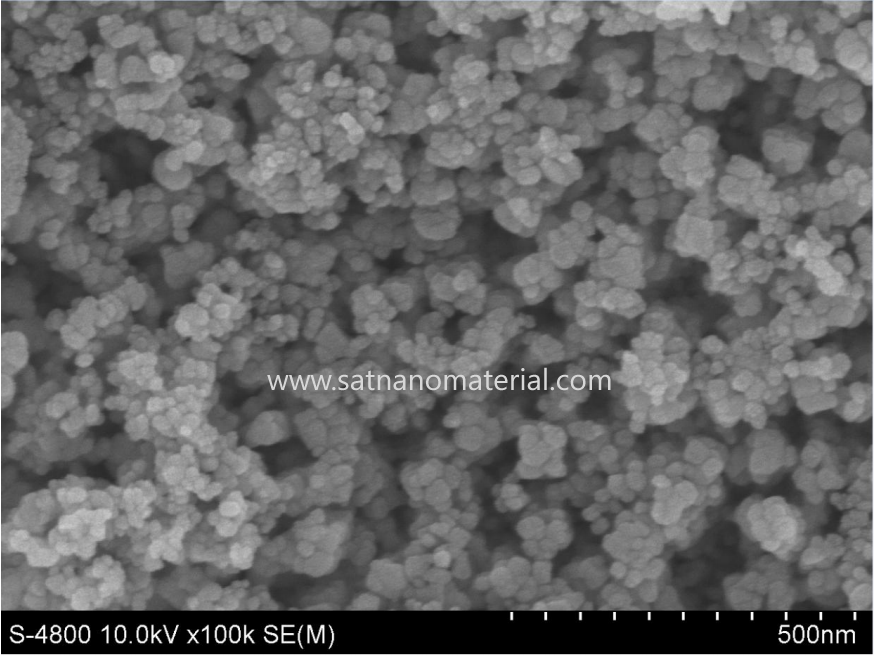cas 7440-05-3 pd nanopowder 초 미세 팔라듐 촉매제
크기 : 20-30nm 순도 : 99. 95 % CAS 번호 : 7440-05-3 에니 넥 번호. : 231-115-6 외관 : 흑색 화약 모양 : 구형
크기 : 20-30nm 순도 : 99. 95 % CAS 번호 : 7440-05-3 에니 넥 번호. : 231-115-6 외관 : 흑색 화약 모양 : 구형
고객의 요구 사항에 따라 니오븀 규화물 분말의 다양한 크기의 제품을 공급할 수 있습니다. 크기 : 1-3um; 순도 : 99.5 %; 모양 : 과립 CAS 번호 : 12034-80-9; 에니 넥 번호. : 234-812-3
ni2si 입자, 99.5 % 순도, 입상 형태, 마이크로 전자 집적 회로, 니켈 실리사이드 필름 등에 사용됨 크기 : 1-10um; CAS 번호 : 12059-14-2; eninec 번호. : 235-033-1
신에너지 자동차, 에너지 저장 발전소, 가전제품 등 폭발적인 성장 속에서 '핵심'은 리튬 배터리 - 활물질의 입자 크기 - 가 배터리 성능을 좌우하는 핵심 열쇠가 되고 있습니다. 테슬라 4680 배터리부터 CATL 기린 배터리까지, 리튬철인산철부터 삼원계 양극재까지, 활물질 입자 크기를 마이크로미터 단위로 조정하는 것은 배터리의 충방전 속도, 사이클 수명, 심지어 안전 한계까지 직접적인 영향을 미칩니다.
왜 기술 거대 기업들은 나노스케일을 추구하고 있을까?

픽의 법칙에 따르면, 입자 내부에서 리튬 이온의 확산 시간은 입자 반경의 제곱에 비례합니다. 나노스케일 입자(<100nm)는 리튬 이온의 확산 경로를 마이크로미터 크기 입자의 1/10로 단축시켜 고체상 확산 저항을 크게 줄입니다. 예를 들어, 리튬 철 인산(LiFePO₄) 입자의 크기를 5μm에서 100nm로 줄이면 이온 전도도가 3배 증가하여 10°C 이상에서 고속 충방전을 지원합니다. ·삼원계 양극재(NCM)는 나노스케일 1차 입자 응집체를 채택하여 45°C의 고온에서도 85%의 용량을 유지할 수 있습니다.
2. 전자 전도성 입자의 "밀집된 네트워크"는 전극 내 접촉점을 더욱 조밀하게 형성하여 이론적으로 전자 전도 효율을 향상시킵니다. 실험 결과, 나노스케일 리튬코발트산화물(LiCoO₂) 입자의 접촉 면적이 40% 증가하고 전극 저항은 25% 감소하는 것으로 나타났습니다. ·탄소나노튜브 복합 음극에서는 나노실리콘 입자와 전도성 물질 사이의 접촉점 밀도가 3배 증가하여 효율이 최초로 90%를 넘어섰습니다.
3. 저온 성능의 "저해 요인"은 -20℃의 저온 환경에서 나노 크기 입자의 리튬 이온 탈리 속도론을 더욱 빠르게 나타냅니다. 특정 브랜드의 전기차에 대한 실제 테스트 결과, 나노 양극을 사용하는 배터리는 -15℃에서도 용량의 85%를 방출할 수 있는 반면, 기존 소재는 60%만 방출합니다.
4. 사이클 수명의 "반격자"인 작은 입자 크기는 심충전 및 방전 시 농도 응력 구배를 완화할 수 있습니다. 닝더 타임스 연구소(Ningde Times Laboratory)의 데이터에 따르면, 나노 3원소 재료의 용량 유지율은 3,000회 사이클 후 82%에 도달하며, 이는 미크론 단위 재료보다 15% 높습니다.
작은 입자 크기의 '치명적 부상': 3가지 주요 숨은 위험을 어떻게 해결할 것인가?
1. 응집 현상: "효율적인 채널"에서 "죽음의 섬"까지 나노입자의 높은 비표면적(최대 100m²/g)은 표면 에너지를 크게 증가시켜 응집이 발생할 가능성을 높입니다. 예를 들어, 슬러리에서 나노 리튬 철 인산염이 응집되면 코팅된 전극에 20μm 크기의 기공이 나타나 국소 전류 밀도가 3배 증가합니다. · 에너지 저장 발전소 사고 조사 결과 양극재의 응집으로 인해 내부 단락이 발생하고 온도가 300℃까지 급등하여 열 손실이 발생하는 것으로 나타났습니다. 해결책: 표면 코팅 기술: 나노입자에 탄소층 또는 산화물을 코팅하여 표면 에너지를 감소시킵니다. · 분산제 최적화: 비이온성 분산제를 사용하여 슬러리의 점도를 6000mPa·s 미만으로 제어합니다.
2. 부반응 폭풍: 나노스케일의 "연소 폭탄" 나노입자와 전해질 사이의 접촉 면적이 10배 증가하여 다음과 같은 현상이 발생합니다. · 전해질 분해: 나노입자는 고온에서 전해질 산화를 촉진하여 가스 생성량을 5배 증가시킵니다. · 금속 이온 용해: 나노스케일 니켈 코발트 망간 산화물 리튬(NCM)은 4.5V의 고전압에서 0.3%/사이클의 금속 용해율을 보이며, 이는 마이크론 스케일 재료보다 두 배 높습니다. 해결책: · 전해질 첨가제: FEC(플루오르화 비닐 카보네이트)와 같은 피막 형성 첨가제를 도입하여 부반응을 억제합니다. · 전압 윈도우 최적화: 충전 차단 전압을 4.3V에서 4.2V로 낮추어 사이클 수명을 40% 증가시킵니다.
3. 공정상의 악몽: "나노 드림"에서 "대량 생산 핏"에 이르기까지 나노소재의 대량 생산은 세 가지 주요 과제에 직면합니다. 첫째, 분산의 어려움: 마이크론 크기 소재보다 3배 더 많은 에너지를 소모하는 고전단 샌드 밀을 사용해야 합니다. 둘째, 시험 비용: 레이저 입도 분석기 시험 빈도를 배치당 3회로 늘려야 하므로 비용이 50% 증가합니다. 셋째, 장비 마모: 나노입자는 샌드 밀에서 지르코니아 비드의 마모율을 10배 증가시키고 유지보수 주기를 72시간으로 단축합니다. 해결책:
· 건식 과립화: 나노입자를 마이크로미터 크기의 2차 입자로 미리 응집시켜 성능과 공정의 균형을 맞춥니다. · 온라인 감지: 공정 분석 기술(PAT)을 도입하여 입자 크기 분포를 실시간으로 모니터링합니다.
나노 입자 크기, 종착점인가, 아니면 시작점인가? 작은 입자 소재는 마치 양날의 검과 같습니다. 배터리에 탁월한 성능을 부여하는 동시에 제작 및 안전성 측면에서도 어려움을 야기합니다.
SAT NANO는 중국 최고의 나노 파우더 및 미크론 입자 공급업체로서 다음과 같은 서비스를 제공합니다. 구리 가루 , 실리콘 분말 배터리용 및 기타 제품도 있습니다. 문의 사항이 있으시면 admin@satnano.com으로 언제든지 연락주세요.